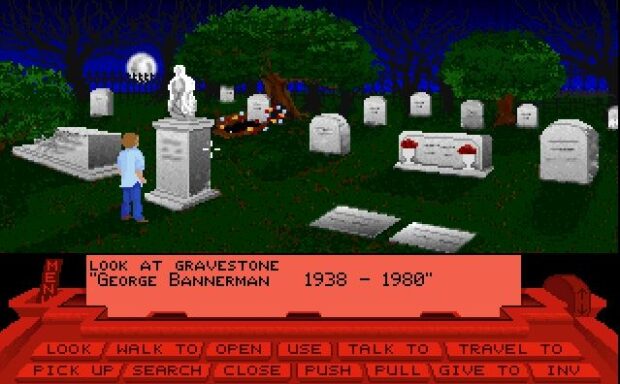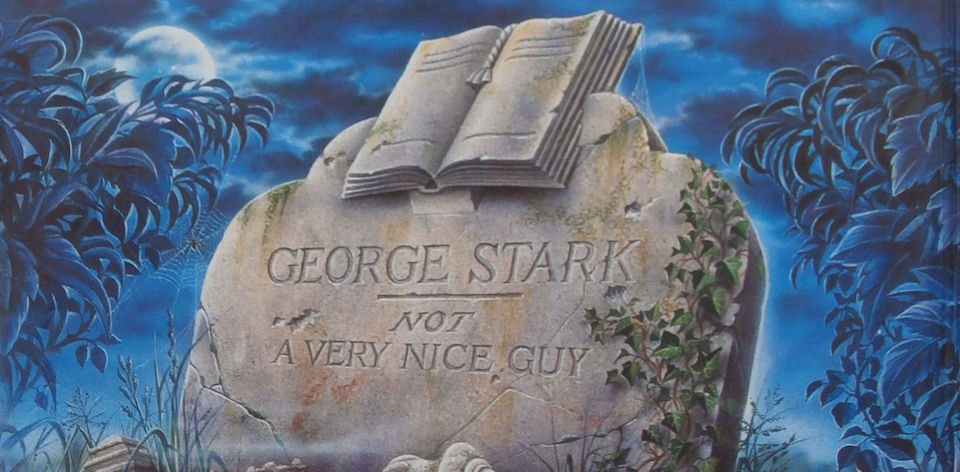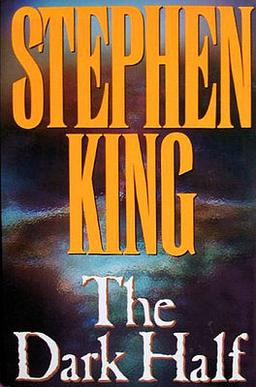Welcome back to the feature column that explores Stephen King’s books in the order they were published…sort of! Art imitates life as a writer’s alter ego is unveiled.
WARNING: this article is half-filled with dark spoilers.
So we return to Castle Rock, the scene of so many past and future horrors. The middle chapter of a loose thematic trilogy with the short story “The Sun Dog” and the later Needful Things, THE DARK HALF is one of several King books to rip inspiration from the real world.
For years, King led a secret life as a writer. Well, as a different writer. Richard Bachman, who debuted with Rage (1977) and gave us classics like The Running Man (1982), was outed as King by Steve Brown around the time of Thinner (1984).
King “killed off” his nom de plume, although cheekily referred to him in the third person from time to time. Indeed, THE DARK HALF is dedicated to “the late Richard Bachman.” This is where life and art intersect: just as fan outrage over The Eyes of the Dragon gave us Annie Wilkes, King’s outing as Bachman directly led to the creation of George Stark.
“The world would be a more efficient place if everyone in it came out of a pop novel.”
In King’s novel, first published in 1989, Thad Beaumont is a recovering alcoholic known for his literary fiction. After being outed as George Stark, a crime writer known for his Alexis Machine novels, Thad and his wife Liz stage a mock burial for Stark.
So, it’s surprising when Castle Rock’s Sheriff Alan Pangborn, introduced in this book as a successor to the late George Bannerman (The Dead Zone, Cujo), turns up on his doorstep convinced of Thad’s guilt in a recent murder. Yet as more deaths occur, and Thad’s alibi gets tighter, it becomes apparent that someone else with Thad’s DNA is on a revenge rampage. Thad soon finds that he’s connected to this figure, one that literally crawled from the grave of the ‘late’ Stark.
THE DARK HALF is something of an anomaly in King’s oeuvre to this point. On the one hand, it pulls on themes that we’ve seen before: a writer held hostage (Misery), the duality of self (The Talisman, The Shining), and small town cop facing an unknown entity in Castle Rock. It’s undeniably a King novel, yet there’s a lot more ink to the darkness this time around.

Beginning with the graphic description of young Thad’s surgery, where the eyes and teeth of a twin devoured in utero remain lodged in his brain, this is possibly King’s most gruesome piece of murder fiction at this point. There’s a particularly sticky sequence where a woman is murdered in her apartment. In another, a man is killed by “splitting his scrotal sac, drawing the razor up and out in a long, buttery stroke.” Perhaps, like the connection Thad and George share, King was channelling the deceased Bachman. Or at least borrowing his mask for a time.
Indeed, there’s more of a structural similarity to a mystery thriller than a straight horror novel at first. King credits Donald E. Westlake and his pen name Richard Stark as an inspiration. It’s interesting that I always considered Mr. Mercedes (2014) as one of King’s first forays into pure crime, but there’s a lot of modular elements in here too. Pangborn’s arc is effectively that of sceptical detective, staying on the fringes of supernatural doings until necessary. For Constant Readers, there’s only hints of the family whose absence would form part of the catalyst for later adventures.
“He has ALWAYS been two men…The one who exists in the normal world…and the one who creates worlds. They are two. Always at least two.“
Where things get really interesting are in the broader myth-making at play. Sparrows form a recurring motif, later identified as ‘psychopomps’: “the harbingers of the living dead” whose “job is to guide newly dead souls to their proper place in the afterlife.” Constantly swirling like something out of a Hitchcock film, Stark’s inability to see them – and Thad’s growing understanding of them – fills the back third of the book with a tension that rips along at a pace.
King would return to these themes in the short story “Secret Window, Secret Garden” (in the Four Past Midnight anthology) but also decades later in The Outsider (2018), a narrative that is an almost mirror image of this one. Similarly, it’s been pointed out to me that the the psychic connection Thad and George share – one gets stabbed in the hand, the other feels it for example – turns up again in Doctor Sleep (2013). Pangborn himself would return in Needful Things, picking up on a few threads here, and in many ways conclude his arc in the TV series Castle Rock.
THE DARK HALF has been adapted multiple times, including the 1993 George A. Romero film and a strangely accurate 1992 DOS game from developers Symtus (released by Capstone Publishing and pictured above). Yet it’s the print edition that has the most power in its exploration of the literary doppelgänger. While not strictly metafictional in nature, it preempts the inter-textual collaboration of King/Bachman in Desperation/The Regulators (1996), along with King’s insertion of himself into The Dark Tower saga.
Next time, Inconstant Reader synchronises its watches for Four Past Midnight, a collection of four novellas. While you’re here, go check out Batrock.net, where my buddy Alex Doenau is running through this Stephen King adventure with me.





